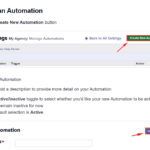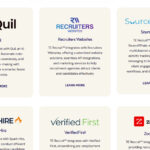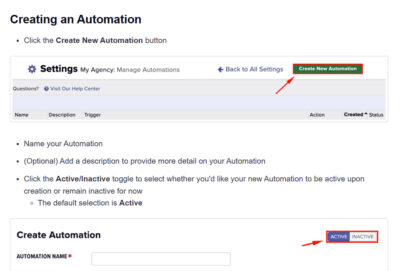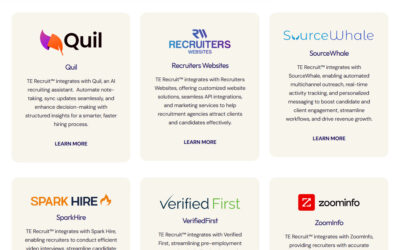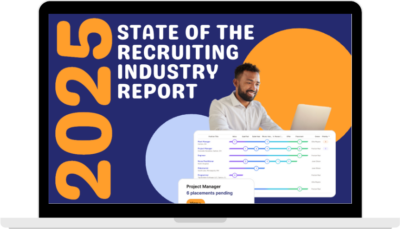In the fast-paced world of agency recruitment and executive search, every recruiter faces a daunting question: How do I break through the noise and connect with top talent? The answer lies in one of the most overlooked but critical elements of the recruitment process—outreach messaging.
Whether you’re an experienced search consultant or a new recruiter learning the ropes, your outreach message is the beginning of a story—the story of a candidate’s next great opportunity. If you fail to hook them from the start, you risk missing out on an exceptional hire. But if you get it right? You don’t just fill a role—you become a trusted career advisor.
In this comprehensive guide, we’ll walk through how to write outreach messages that resonate. You’ll learn how to position the candidate as the hero, offer a clear plan, remove obstacles, and inspire action—all while optimizing for digital performance and modern communication trends.
The Problem: Generic Outreach Is Killing Your Response Rates
Let’s face it—candidates are bombarded with messages daily. Most of them are painfully impersonal: “We have an exciting opportunity for you!” or “Are you open to new roles?” These messages often go straight to the trash, or worse, damage your credibility as a recruiter.
The root of the problem? Recruiters focus too much on filling roles and not enough on why the candidate should care. The result: missed connections and declining response rates.
The External, Internal, and Philosophical Problems Candidates Face
To write better messages, you need to understand your candidate’s experience:
-
External Problem: They’re being contacted constantly by recruiters offering generic opportunities.
-
Internal Problem: They don’t feel seen or valued, and they’re tired of irrelevant outreach.
-
Philosophical Problem: They believe they deserve career opportunities tailored to their skills, goals, and interests—not mass-market pitches.
To win their attention and trust, your outreach must speak directly to these pain points.
Step 1: Researching the Candidate—Because Relevance Wins
You wouldn’t propose marriage to a stranger, so why propose a job without doing your homework?
Before you draft your first word, research your candidate. This is your opportunity to show them they’re more than just a name in your ATS. Start with LinkedIn, but go deeper if possible—look for personal blogs, GitHub contributions, conference talks, or thought leadership on social media.
Identify:
-
Recent promotions or role changes
-
Projects or products they’ve led
-
Certifications or achievements
-
Common connections or alma maters
Use this insight to customize your message. For example:
“I saw your recent keynote on data-driven UX design at UXConf and was truly impressed by your approach to balancing metrics with empathy.”
That single sentence tells the candidate: You saw me. You get me. That’s how trust begins.
Step 2: Crafting an Irresistible Subject Line
Your subject line is the gatekeeper of your message. If it doesn’t intrigue, it doesn’t get opened. Simple as that.
Avoid tired clichés like:
-
“Hot job alert!”
-
“You don’t want to miss this!”
-
“Are you open to work?”
Instead, aim for specificity, relevance, and curiosity:
-
“Your work in cloud security stood out—let’s talk”
-
“Growth opportunity with AI-driven healthcare startup”
-
“Reaching out about your recent SaaS leadership success”
Test different styles using A/B testing and track open rates over time. The subject line is your headline—make it count.
Step 3: Personalizing the Opening Line to Build Trust Instantly
Once your email is opened, the first line determines whether they’ll keep reading or bounce.
Generic intros like “Hope this finds you well” or “I came across your profile” scream mass email.
Try this instead:
“I’ve followed your product work at [Company] for some time—especially the launch of your mobile platform, which was a game-changer for patient onboarding.”
Or:
“I saw your recent Medium article on ethical AI and thought it was one of the most thoughtful takes I’ve read all year.”
Personalization demonstrates respect and sets the tone for a human, one-on-one conversation.
Step 4: Clearly Explaining Why You’re Reaching Out
The best messages answer one simple question in the candidate’s mind: Why me?
Don’t bury the lead. Get to the point and align the opportunity with the candidate’s expertise:
“I’m recruiting for a Director of Engineering role at a fast-growing fintech firm backed by Sequoia. Your background scaling engineering teams at [Company] caught our attention.”
Or:
“We’re supporting a digital health startup building wearable biometric tech. Your experience leading IoT initiatives at [Company] makes you an ideal fit.”
Clarity builds credibility. If you can’t articulate why the candidate is a match, they won’t believe it either.
Step 5: Keep It Short, Focused, and Scannable
Lengthy outreach messages are often ignored. The ideal message length? Under 200 words.
Stick to one goal: Get a response. Don’t include the full job description or a company bio. Save those for later conversations.
Your message should include:
-
A compelling reason for contact
-
The hook of the opportunity
-
A clear CTA (we’ll cover that next)
Format it for skimmability—short paragraphs, no jargon, and plenty of white space.
Step 6: Make It About the Candidate, Not the Job
Recruiters often default to job specs. But candidates want to know: What’s in it for me?
Speak to their goals, values, and pain points:
-
“This role offers the chance to lead an analytics team from the ground up and make a direct impact on patient outcomes.”
-
“The company is building in public and gives engineers autonomy to choose their tech stack—ideal for someone with your innovative mindset.”
Centering the candidate as the hero of the story (not your client) builds emotional buy-in.
Step 7: Write Like a Human
Authenticity beats formality every time. While professionalism is important, avoid sounding like a corporate robot.
Instead of:
“We are currently seeking an experienced software architect with a proven track record in cloud-based solutions.”
Say:
“I’d love to tell you about a role that matches your leadership in cloud architecture and gives you a seat at the product strategy table.”
Conversational language builds rapport. Imagine writing to a peer you admire, not a faceless lead.
Step 8: End With a Clear, Easy Call to Action
A vague closing like “Let me know if you’re interested” puts the burden back on the candidate. Make it simple for them to say yes.
Examples:
-
“Are you open to a quick 15-minute chat this week? I’m happy to work around your schedule.”
-
“Does Thursday afternoon work to hop on a call and talk through the opportunity?”
The goal is to reduce friction and encourage forward motion.
Step 9: Use Follow-Ups Thoughtfully
No response? Don’t assume rejection.
Follow up 5–7 days later with a brief message:
“Just circling back on the opportunity I mentioned. I’d still love to connect if the timing is right.”
Still nothing? One final follow-up 10–14 days later:
“Totally understand if now isn’t the right time. If it’s okay, I’ll keep you in mind for future roles that match your background.”
Gracious follow-ups preserve relationships—and sometimes land great hires months later.
Step 10: Diversify Your Channels
Email and LinkedIn are staples, but don’t be afraid to explore alternatives:
-
Text messaging for warm leads (with permission)
-
Phone calls for executive roles or sales candidates
-
Twitter/X or Slack for developers or creatives
Just be mindful of tone and timing. Choose channels based on what your candidate audience prefers.
Step 11: Avoid the Most Common Outreach Mistakes
Even experienced recruiters slip into these traps:
-
Using templates without customization
-
Focusing too much on the company, not the candidate
-
Overusing buzzwords like “rockstar” or “fast-paced environment”
-
Failing to follow up at all
Always review your messages through the candidate’s eyes. Would you respond to what you just wrote?
Step 12: A/B Test Your Outreach Like a Marketer
The best recruiters don’t guess—they experiment.
Test different:
-
Subject lines
-
Opening sentences
-
CTAs
-
Message length and structure
Use your ATS or CRM to track open and response rates. Over time, you’ll build a data-driven playbook that consistently delivers results.
Step 13: Think Long-Term—Build Relationships, Not Just Pipelines
Not every outreach will convert today. But every positive impression plants a seed.
When a candidate says no, respond with gratitude:
“Thanks for letting me know. I really appreciate it—if you’re ever open in the future, I’d love to stay in touch.”
Send periodic check-ins. Share helpful industry articles. Offer to introduce them to peers or mentors. Show up as a career ally, not just a headhunter.
In six months, that “no” might become a “yes.”
Final Thoughts: Become the Recruiter Candidates Want to Hear From
Effective outreach is no longer optional—it’s your competitive edge.
By writing messages that are personalized, relevant, and human, you position yourself as a guide—not just another recruiter. Candidates will see you as someone who understands their story, speaks their language, and offers opportunities that matter.
When you show up that way, candidates respond—not just to your message, but to you.
Ready to Elevate Your Outreach Game?
If you’re serious about improving your candidate engagement and filling roles faster, it starts with the right technology. TE Recruit™ by Top Echelon is the top-rated all-in-one ATS and CRM designed specifically for recruiting agencies. From powerful automation and customizable outreach templates to integrated analytics and pipeline tracking, TE Recruit helps you scale your efforts without sacrificing the human touch.
Want to see it in action?
Request a demo of TE Recruit today and learn how to transform your outreach into a candidate experience that converts.



